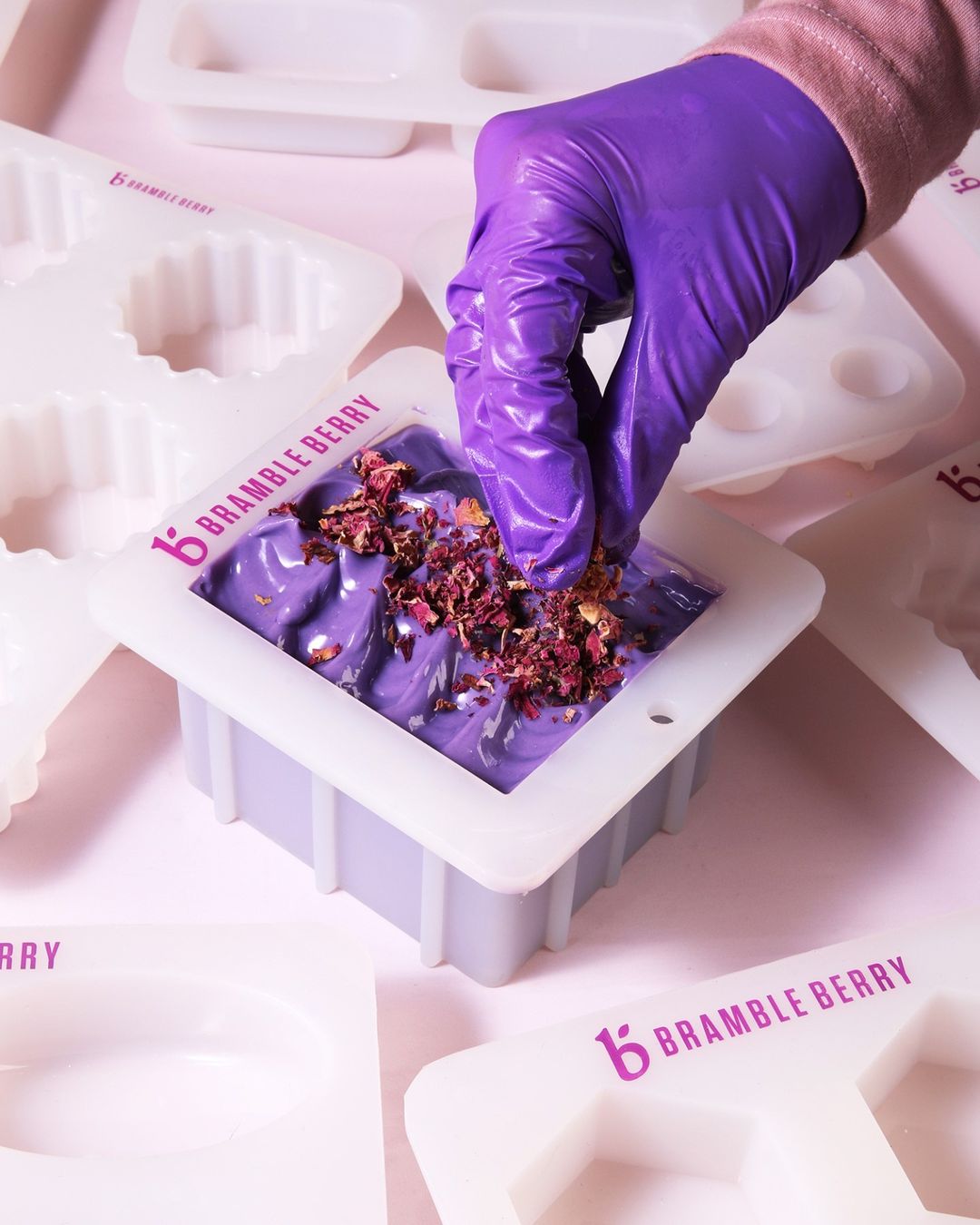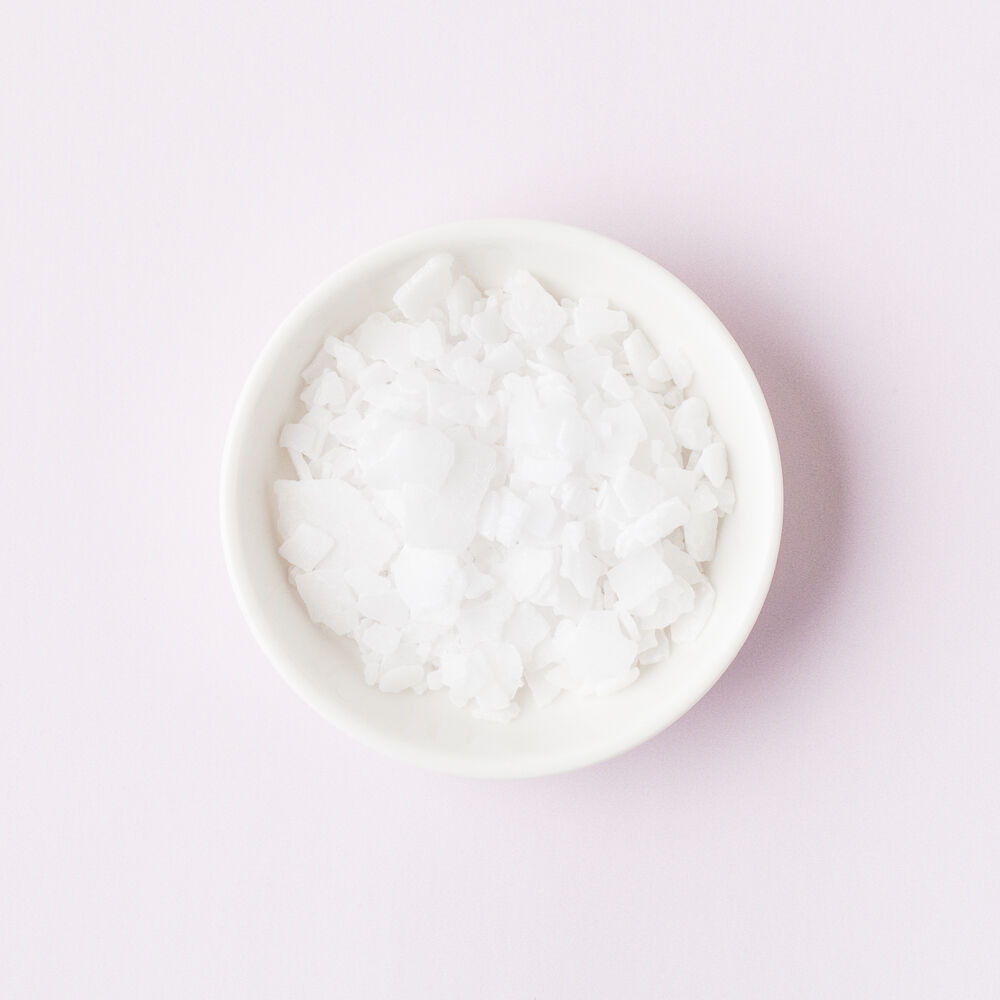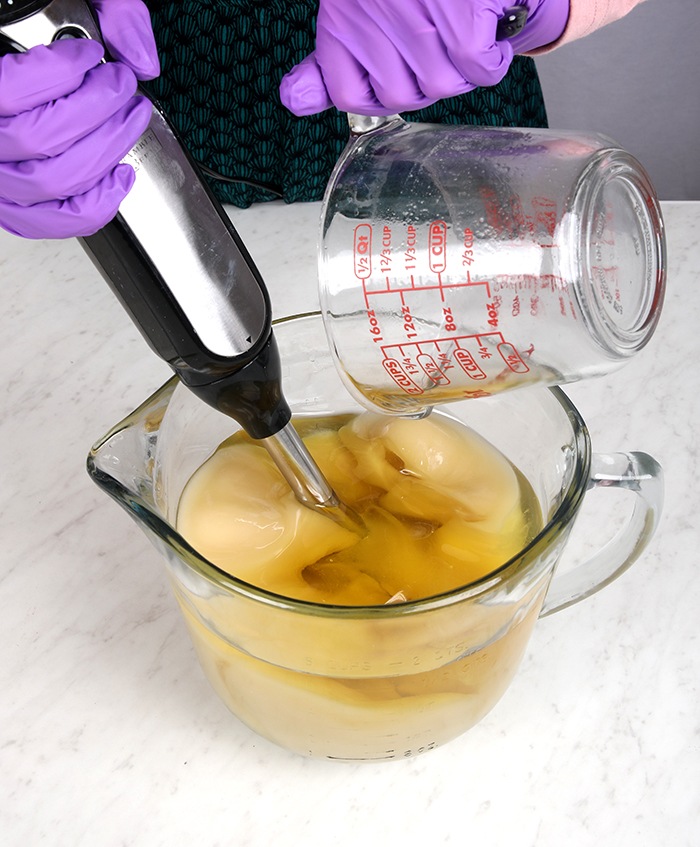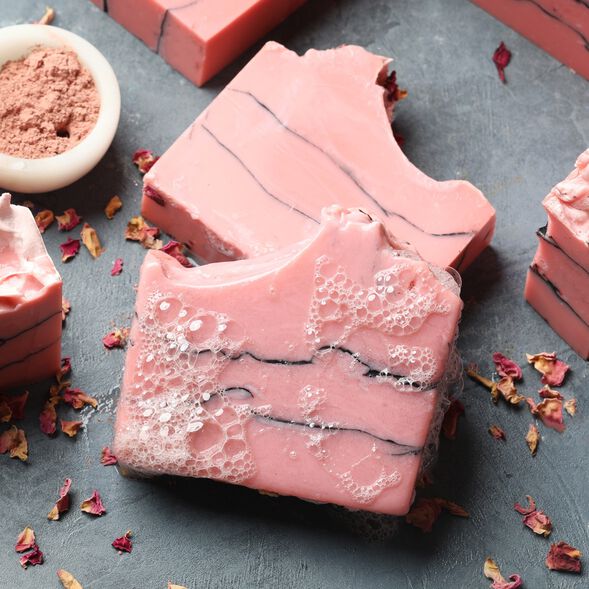Many beginners are surprised to learn that lye is necessary to make soap at home. The thought of working with a caustic substance can be intimidating, especially if you've never done it before.
We're here to tell you - the results are definitely worth it! Handmade soap feels amazing on the skin, and lye is safe to work with when handled properly. Learn how below.

Find soap making supplies here
What is lye?
Sodium hydroxide lye is an inorganic compound commonly found in drain cleaners. It's highly caustic and can burn the skin. Lye comes in various forms, such as flakes, pellets, and powder. Ours comes in flake form, which makes it easy to measure and also prevents static cling.
When lye comes in contact with oils, it causes a chemical reaction called saponification. After a few days, all the lye is turned into soap and safe to use on the skin.
To get started, the lye needs to be mixed with a liquid like distilled water. As it dissolves, it has an exothermic reaction that causes a dramatic temperature increase. Lye in room temperature water can reach up to 200° F. The mixture also creates fumes, which should not be inhaled.
Once it's cool, the lye solution is poured into oils and stick blended. Saponification will begin right away.

This can sound pretty scary, and it's normal to be nervous when you're working with lye. Just be sure to follow the steps below every time.
How to use lye safely
Wear proper safety gear
You need to cover anything that may accidentally come in contact with lye during the soap making process. That means long sleeves, gloves, long pants, and closed-toe shoes. You also need to wear goggles that fully cover your eyes - glasses aren't enough. That's why we carry these safety goggles that go over glasses. Some makers also like to wear masks so they don't breathe in the fumes.
Prepare the solution in the right space
Good ventilation will also help you avoid breathing lye fumes. That can be as simple as opening a few windows, running some fans, or using an air purifier. Some makers also like to mix their lye solution outside.
It's also important to have at least an hour with no interruptions. That means kids, pets, and other distractions/tripping hazards are out of the house or don’t have access to your space.
Use appropriate mixing containers
You need to measure your water and lye in two separate containers. Because of that exothermic reaction, we recommend glass, heat-resistant plastic, or stainless steel. Do not use tin or aluminum. It reacts with the sodium hydroxide and produces harmful fumes.
A few makers have mentioned that their glass containers cracked or broke while mixing the solution. We've use sturdy Pyrex containers for years and haven't experienced that. However, you can use heat-resistant plastic containers if you prefer.
Lastly, make sure the containers have enough room to mix the solution without splashing.
Always add lye to water
Slowly add the lye to the water, NEVER the other way around. That can cause the lye to erupt out of the container.
Store lye appropriately
Make sure to label the container LYE, POISON, or DO NOT TOUCH. Then move it to a safe space to cool. The solution looks just like water, so you want to make sure everyone else in your home knows it's not safe to handle.
The same goes for the lye bottle - make sure it's in a safe space and clearly labeled. It has a shelf life of about a year, and it does best in a cool and dry space.

What to do if lye touches you
According the sodium hydroxide Material Safety Data Sheet (MSDS), first remove any contaminated clothing. Rinse the affected area immediately with plenty of water for at least 15 minutes and seek medical attention if necessary. Make sure to wash the contaminated clothes before you wear them again.
If it comes in contact with your eyes, rinse for a few minutes and then remove contact lenses if you wear them. Continue rinsing for 15 minutes and then get medical attention.
If the fumes are irritating you, move to an area with fresh air.
We don't recommend using vinegar. The thought is vinegar (an acid) on lye (a base) neutralizes it. However, it can actually create a chemical reaction that releases more heat and causes pain. Just use water as the MSDS sheet suggests.
Make sure to keep your safety gear on throughout the whole process, and even during cleanup. As the lye reacts with the oils it isn't as caustic, but it can still irritate your skin. Follow the same procedures above if you come in contact with fresh soap.
Cleaning up
Remember to keep your safety gear on! Wipe out any excess soap with a paper towel. Wash your dishes with hot water and a grease-cutting dish soap. While we don't recommend vinegar on the skin, it is great for cleaup. You can wipe your workspace to neutralize any lye dust that may have gotten on the surface.
Another option is to place all the dishes in a safe space for a few days. In that time, the leftovers will turn into soap. You can scrape them off and then wash like normal.
As you continue to work with lye, you will become more comfortable. Now, let's get started!
Find more beginner resources on soap making here and find cold process soap making projects here.

